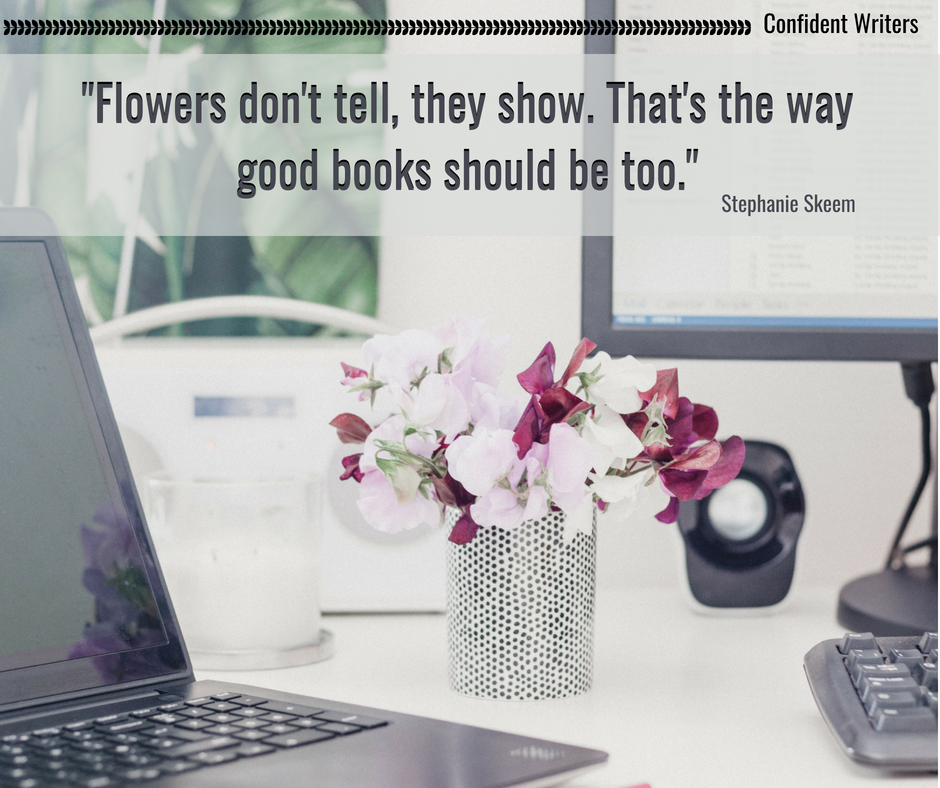
Last week, I shared about describing minor characters and how we shouldn’t let these opportunities pass us by. This week, I wanted to dive deep into how our protagonists (and antagonists) describe themselves. This often trips up new writers and offers particular challenges if you’ve chosen to write your whole novel in deep point of view.
Avoid The Obvious
I’ll begin by restating a point I made last week that you need to avoid the obvious unless there’s something remarkable about it. Everyone has two eyes, a nose, two ears, a chin, hair, etc. If there’s something about one of those features that shows readers either something about the character being described or the one doing the describing, then that’s fine. Otherwise, you might not need to tell readers things they already assume to be true.
Avoid Cliche
The protagonist who looks in the mirror and catalogues their appearance is a bit tired. Same with the character who walks past a mirror or store front window and notes their appearance. Unless this character is often checking themselves out, this has become cliche.
Particularly in deep point of view, one common violation is the protagonist who touches their curly red hair. Who thinks that to themselves? I sure don’t. I might push the hair out of my face and think – ugh, I need a hat. I am not going to think: my unruly and frizzy black hair is driving me crazy. There may be an argument to be made for someone choosing an outfit and holding up dresses in front of herself in a mirror, but even then, they’re not going to think: which outfit highlights my hourglass shape and full-figured bosom?
Remember, the character is telling the story–you aren’t. What would the character think? What does the character see?
What Does Your Character See?
This leads to my next point. There are many occassions that we look into a mirror to examine a particular part of our face or figures. We might focus on the pimple on our chin or study our neck to see if the cat’s claws left a mark. This is fine if it serves the story, but avoid the temptation to have the protagonist catalogue their appearance while they’re in front of the mirror.
What does the character see? What do they focus on or zero in on? People who aren’t particularly self-confident will avoid looking at particular parts of their body. They go to great pains to only look the parts of themselves they like. What don’t they notice? What do they continuously overlook? And what does that show readers?
Examples
In Adrienne Young’s Sky In The Deep, the main character Eelyn never describes herself or her appearance. Instead, we get a sense of what she looks like, what fashions she wears, by the way she notices her partner’s hair, expressions and clothing. Her fighting partner, Myra wears her long hair in long braids, keeps the hair on one side of her head shorn (brush cut) to the scalp. Eelyn adjusts Myra’s armour and so on, so readers understand what Eelyn’s wearing by how she notes problems or adjusts Myra’s clothing and vice versa.
We get a sense of what Eelyn sees as normal when she is kidnapped by another people group and all she can see are the differences and how foreign they look to her. Readers have no problem understanding the dress, culture or appearance of the characters though the author doesn’t tell us what she’s wearing or how she wears her hair directly appart from where it differs from what’s normal to her.
In Claire Douglas’ Local Girl Missing, we’re not told what the two main characters look like. We see them through the eyes of the other twenty years apart. This novel had a unique construction in that one character tells her story in the present and the other character tells her story through a journal twenty years in the past. It’s interesting to see what has and hasn’t changed, which fits a small-town setting quite well.

What Stands Out Or Isn’t Normal For Your Point Of View Character?
If your character is tall, does she notice the one man she doesn’t have to look down on? That could be one way to show readers she’s very tall for a woman in her society.
A character with blue eyes, who feels those blue eyes are her best feature, may spend time only choosing tops that complement or bring out the blue in her eyes.
There are innumerable workarounds for this. But don’t stop there. Dive deeper into character. Physical beauty is often in the eye of the beholder. One man sees a scrawny woman and another sees a woman who’s lithe and toned. Let the physical details you choose to bring out share something about the character doing the describing, even if they’re noting their own appearance. This is easily contrasted by the views and reactions of other characters — do they have a realistic or authentic view of themselves?
“I’m a sight this morning: two shirts, heavy pants, a scarf wrapped twice around my neck and tucked into a thick sweater knitted by my daughter thirty birthdays ago…and still my body shivers with a cold that will never go away, a cold that has been eighty years in the making.” The Notebook, Nicholas Sparks
Sure, we know what Noah, the point of view character above, is wearing but that doesn’t show us anything about his character. It’s how he feels about what he’s wearing–that shows us much more than his clothes do, right. Someone who’s eighty can have a variety of perspectives about their current season of life, but Noah here — seems tired. He’s worn down.
Been told you should learn Deep Point Of View? Had an editor or critique partner tell you to “go deeper” with the emotions in your fiction? Looking for a community of writers seeking to create emotional connections with readers? Check out the Free Resource Hub and then join the Going Deeper With Emotions In Fiction Facebook group.

Comment